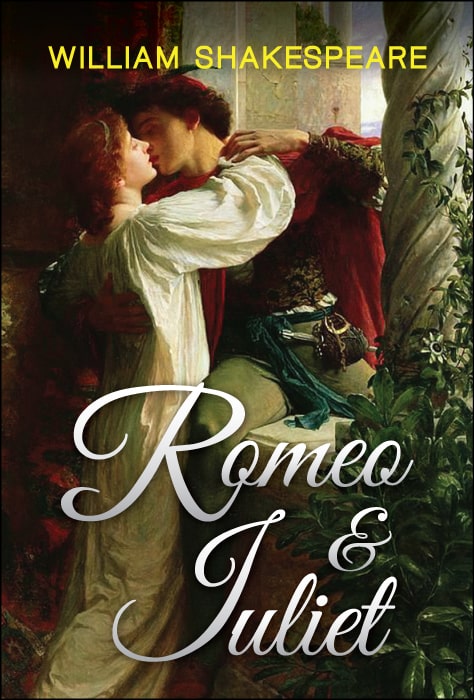William Shakespeare’s Romeo and Juliet is a tragedy that has been captivating audiences for over four centuries. One of the reasons for its enduring popularity is the rich imagery that Shakespeare employs throughout the play. The imagery not only adds depth to the characters and their relationships but also enhances the audience’s emotional connection to the story. This article will explore some of the most striking examples of imagery in Romeo and Juliet and how they contribute to the play’s themes and overall impact.
Table of contents
Love and Light Imagery
The imagery of love and light is prevalent throughout Romeo and Juliet, emphasizing the beauty and purity of the titular characters’ love for each other. From the opening scene, when Romeo compares his love to the sun rising in the east, to the final tragic moments when Romeo describes Juliet as an angel in a tomb, Shakespeare uses light to symbolize the transcendent nature of their love.
For example, in Act II, Scene 2, Romeo famously declares, “But, soft! what light through yonder window breaks? / It is the east, and Juliet is the sun.” This metaphorical comparison of Juliet to the sun not only emphasizes her beauty but also highlights the power of her love to brighten Romeo’s life. Similarly, in Act III, Scene 5, Juliet pleads with the departing Romeo to stay, using imagery to describe how his presence makes the darkness of night seem like day: “Yon light is not daylight, I know it, I: / It is some meteor that the sun exhales, / To be to thee this night a torch-bearer, / And light thee on thy way to Mantua.” Here, Juliet portrays Romeo as a beacon of light in her life, and his absence leaves her in darkness.
Death and Darkness Imagery
While love and light imagery symbolizes the beauty and purity of Romeo and Juliet’s love, death and darkness imagery serves to underscore the tragic nature of their story. From the very beginning, Shakespeare uses dark and foreboding language to foreshadow the play’s tragic end. The imagery of death is present throughout the play, highlighting the inevitability of the lovers’ fate.
For example, in Act I, Scene 4, Romeo describes himself as a “vessel / By heaven’s will ordained to be the plague / Of this rotten age.” Here, Romeo’s use of the word “plague” foreshadows the tragic events that will unfold and suggests that he is destined to bring death and destruction. Similarly, in Act III, Scene 2, Juliet uses death imagery to describe her love for Romeo, saying, “My bounty is as boundless as the sea, / My love as deep; the more I give to thee, / The more I have, for both are infinite.” This passage is notable for its use of the word “infinite,” which suggests that Juliet’s love for Romeo is all-encompassing and eternal. However, the juxtaposition of this language with death imagery (“bounty,” “sea,” “deep”) hints at the tragic end that awaits the lovers.
Nature Imagery
Throughout Romeo and Juliet, Shakespeare also employs nature imagery to reflect the emotional states of the characters and underscore the play’s themes. Nature imagery is used to evoke feelings of joy, beauty, and harmony, as well as chaos, disorder, and violence.
For example, in Act II, Scene 3, Friar Lawrence compares the good and evil in humans to the medicinal and poisonous properties of plants: “Within the infant rind of this small flower / Poison hath residence, and medicine power.” This metaphor emphasizes the duality of human nature, and how good and evil can exist within the same person. Similarly, in Act III, Scene 1, Mercutio uses nature imagery to describe the intense heat of the day, saying, “O, then I see Queen Mab hath been with you. / She is the fairies’ midwife, and she comes / In shape no bigger than an agate stone / On the forefinger of an alderman.” Here, Mercutio uses the image of Queen Mab, a fairy from English folklore, to personify the heat and describe its effects on the characters’ emotions.
Religious Imagery
Religious imagery is also prominent in Romeo and Juliet, reflecting the play’s themes of fate, love, and sacrifice. The characters often refer to religious figures and ideas to express their beliefs and emotions.
For example, in Act II, Scene 2, Romeo compares himself to a pilgrim visiting a holy shrine when he climbs over the wall to Juliet’s garden: “And, touching hers, make blessed my rude hand. / Did my heart love till now? forswear it, sight! / For I ne’er saw true beauty till this night.” Here, Romeo’s use of religious language elevates Juliet to the status of a divine being, highlighting the depth of his love. Similarly, in Act IV, Scene 5, when the Capulet family discovers Juliet apparently dead, Lord Capulet laments, “Death lies on her like an untimely frost / Upon the sweetest flower of all the field.” This metaphor draws a comparison between the beauty and fragility of a flower and the purity and innocence of Juliet’s life.
Conclusion
The use of imagery is a key element in the power and effectiveness of Romeo and Juliet as a tragic play. Shakespeare’s skillful use of love and light imagery, death and darkness imagery, nature imagery, and religious imagery enhances the audience’s emotional connection to the story and reinforces the play’s themes and messages. By employing a range of images and metaphors, Shakespeare creates a rich and complex tapestry that adds depth and resonance to the characters and their relationships, making Romeo and Juliet a timeless masterpiece that continues to captivate audiences today.



 For all latest articles, follow on Google News
For all latest articles, follow on Google News